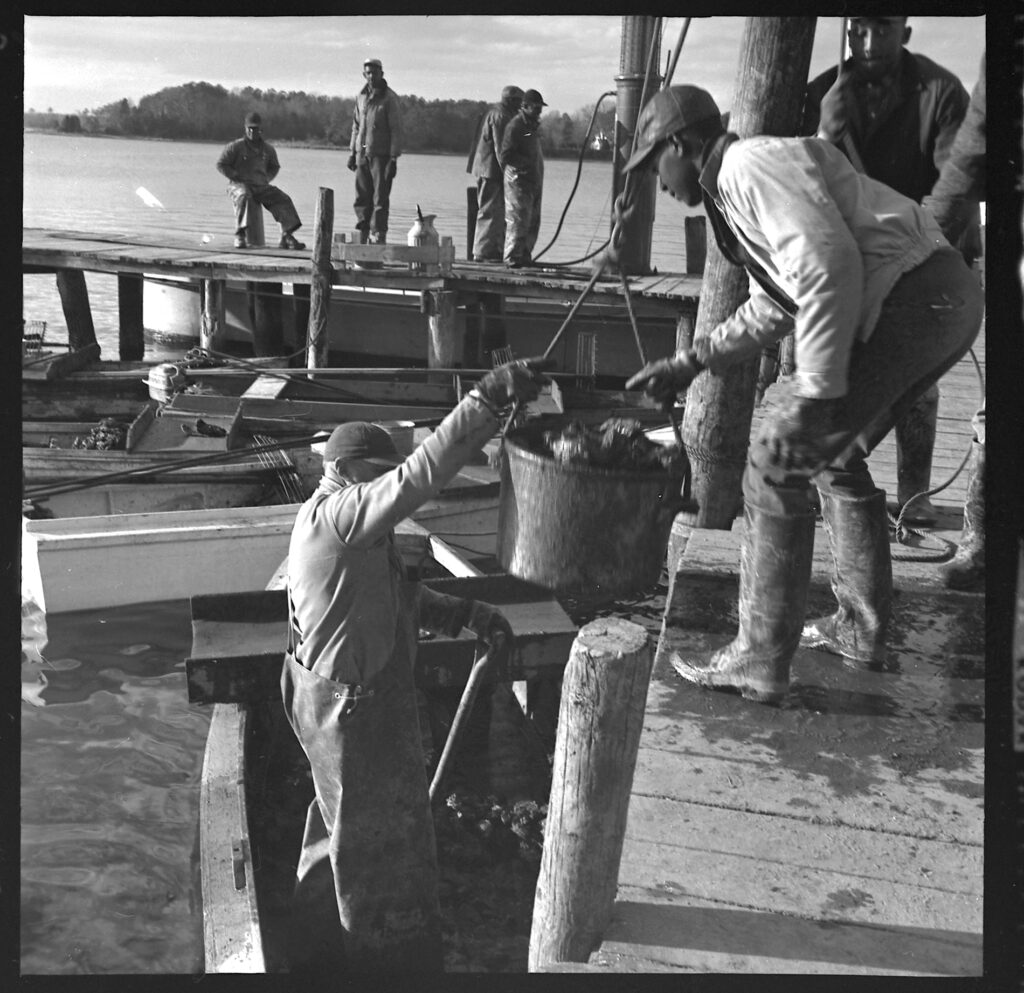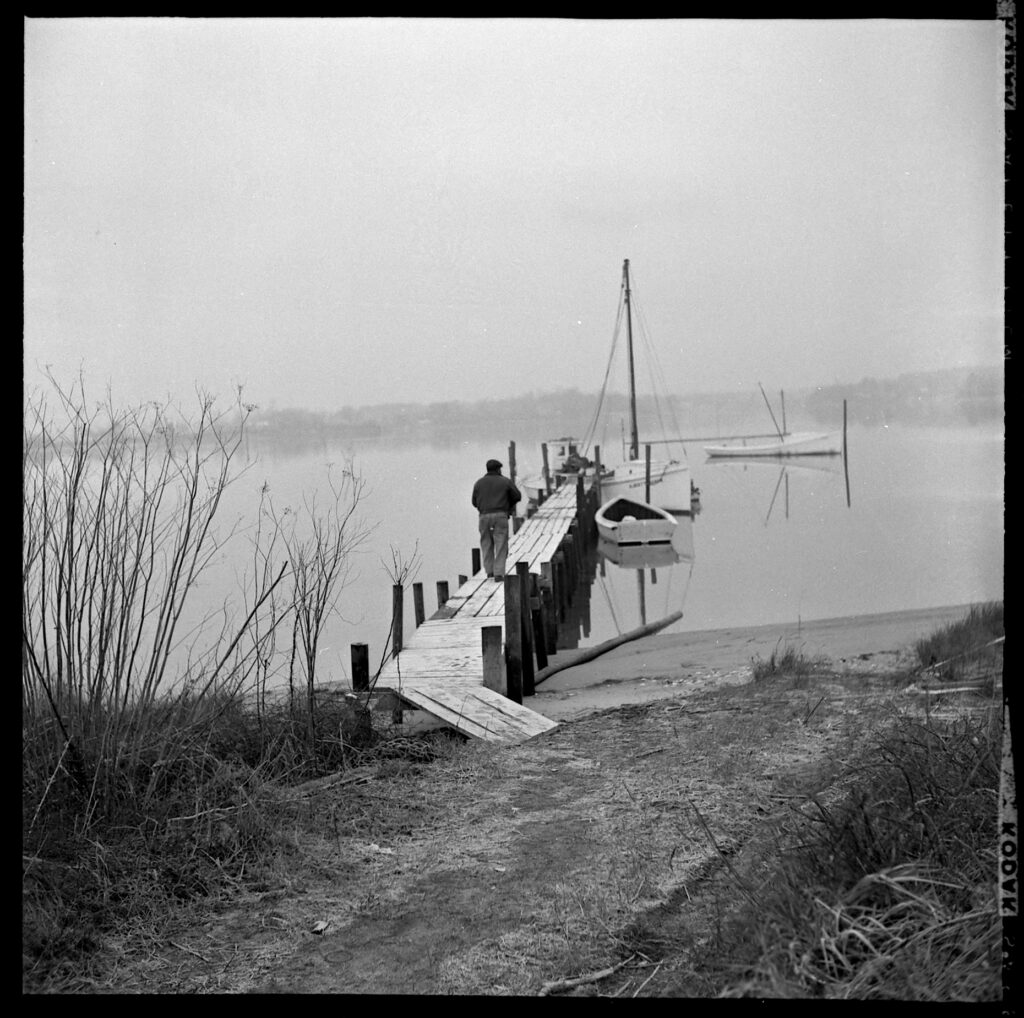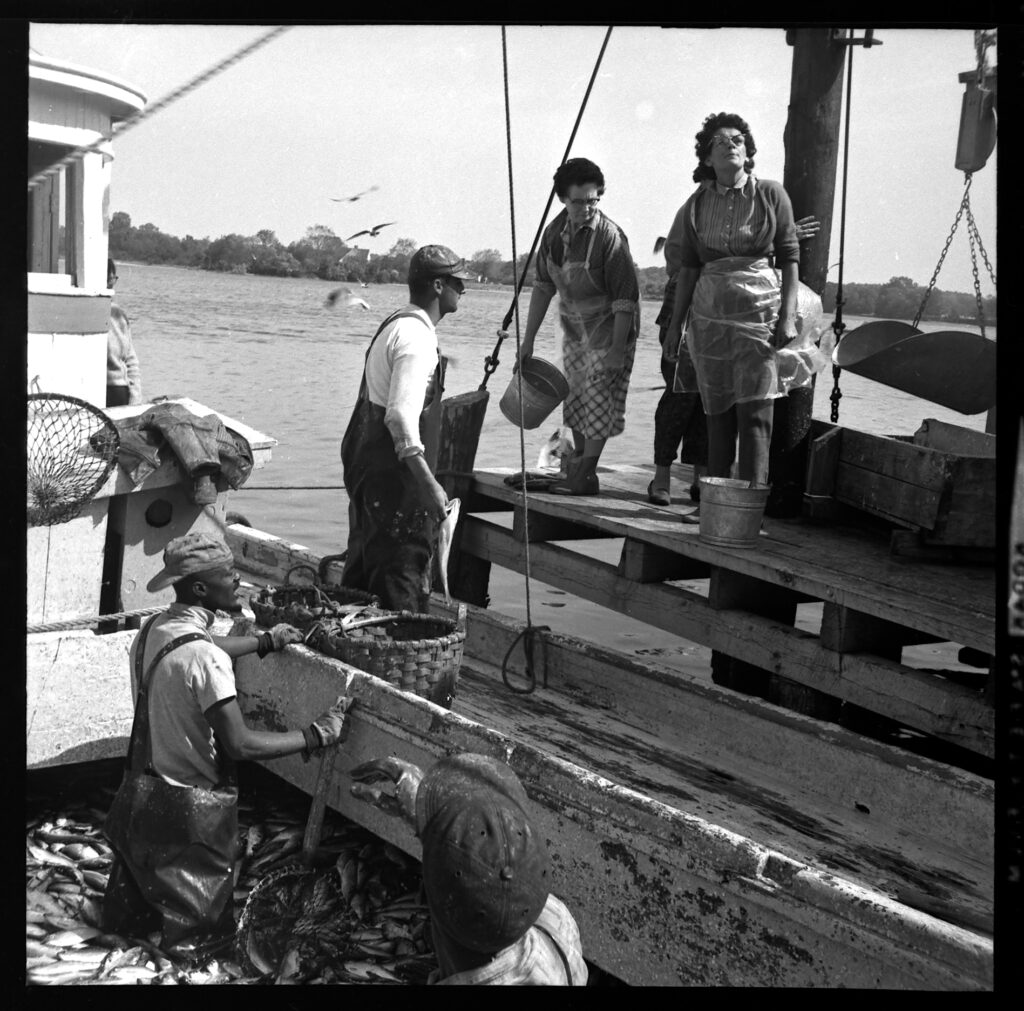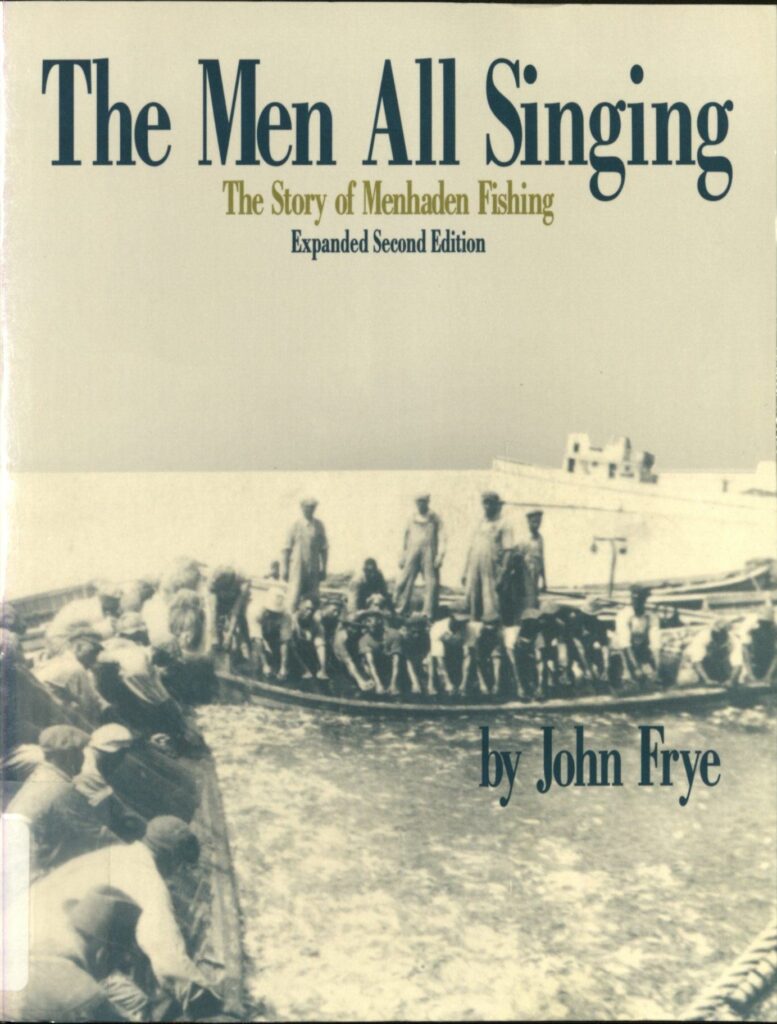
In 2024, The Mariners’ Museum and Park was awarded a Save America’s Treasures grant to digitize and preserve several negative collections that are at risk. One of these collections came from writer and photographer John Frye. The bulk of the collection documents his time spent researching the menhaden fishing industry in the Chesapeake Bay, and during this time, he and his family lived and worked in Heathsville and Kilmarnock, Virginia. The culmination of this effort was his book, The Men All Singing: The Story of Menhaden Fishing, published in 1978.
Along with four binders of more than 7,000 negatives, Frye typed descriptive information for each negative sheet that identifies people and locations as well as the work being done. As an accomplished writer, these notes read like a memoir. Once digitized, these images will resonate with families in the Chesapeake Bay region while providing insight for researchers here and abroad.


These are Frye’s notes for these two photographs: Walter Biddlecomb’s dock at Walnut Point, Va. Biddlecomb’s pound boat is just coming into his dock on Cockrell’s Creek near Fairport and women are waiting to buy fish. Mostly they wanted rock and blues. Not blues, as Captain Biddlecomb hated blues because they cut up his nets. There were frequently rock and other food fish among the herring. Sometimes they bought herring by a large bucket-full for salting.
Born in 1910 in Chicago, Illinois, John Frye spent part of his childhood on Captiva Island, off the coast of Florida. While enrolled at Antioch College in Ohio, he edited the campus newspaper, The Antiochian, and wrote a play titled “Bitter Devotion” and an operetta about Antioch. It was at college that he met and later married Harriet, an artist. After graduating in 1934, he worked for Associated Press and Scripps Howard newspapers.
Frye was a lifelong boating enthusiast. He and Harriet raised three children in Delaware County, Ohio. He taught his family how to sail small craft, and in 1937, they floated a houseboat from Cincinnati to New Orleans.
Later, they moved to coastal Virginia, where Frye wrote about the fishing industry for National Fisherman and other publications. His first book was a history of the menhaden industry and the lives of menhaden fishermen. During their time here, they owned and sailed Hattie Bell IV, a 33-foot ketch. They lived in Heathsville, Kilmarnock and Hampton Roads and also traveled in Ireland, England, Spain, Haiti, and Greece.

Frye authored several other books, including an account of an expedition to raise the Santa Maria off the coast of Haiti, a book on 15th-century Spanish navigation, and a history of Hampton Roads, Virginia. Harriet’s illustrations were featured in children’s books.
These negatives, along with Frye’s descriptions, allow us to better understand the daily lives of watermen in the Chesapeake Bay in the 1960s-1980s. As part of the Save America’s Treasurers grant, John Frye’s negative collection will be digitized later this year. Stay tuned for more discoveries!
Sources:
- Antioch College archives.
- The Mariners’ Museum and Park archives.
- “Obituaries.” Valley News (West Lebanon, New Hampshire). Accessed March 12, 2025. newspapers.com/image/838292537/?match=1&terms=Harriet%20Bennitt%20Frye.